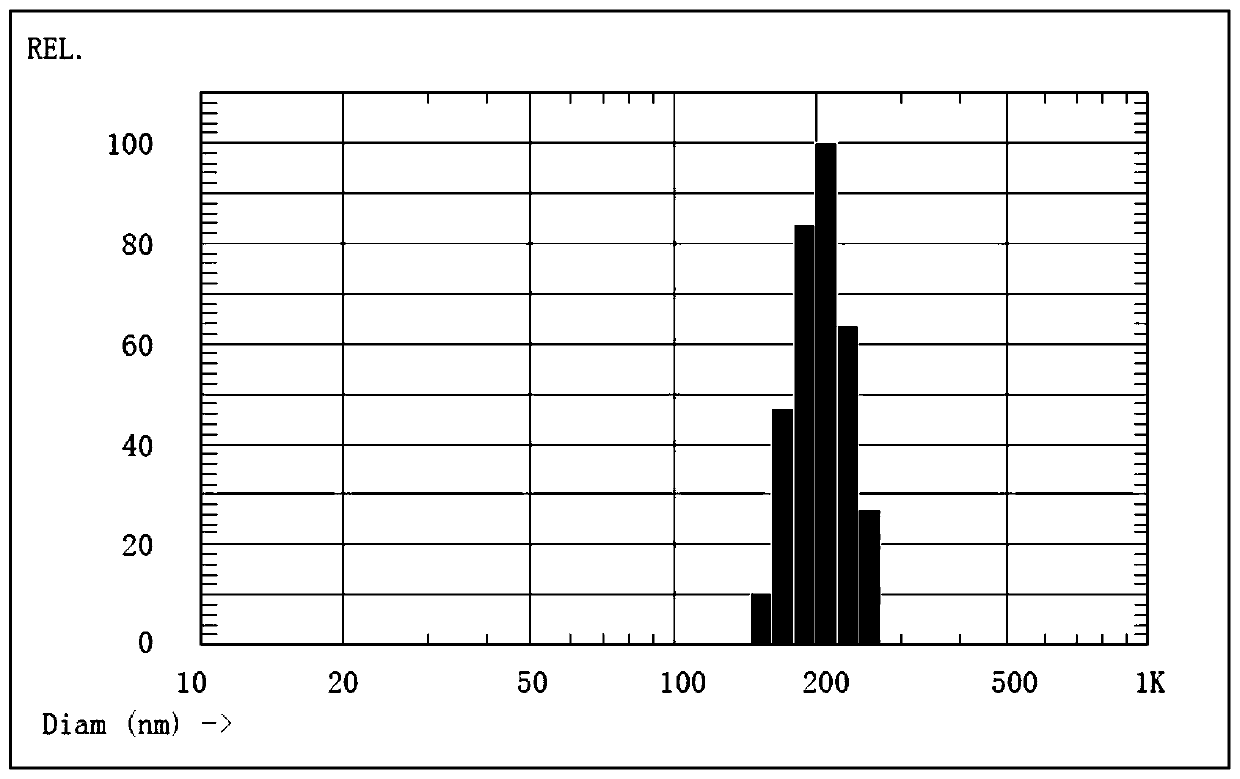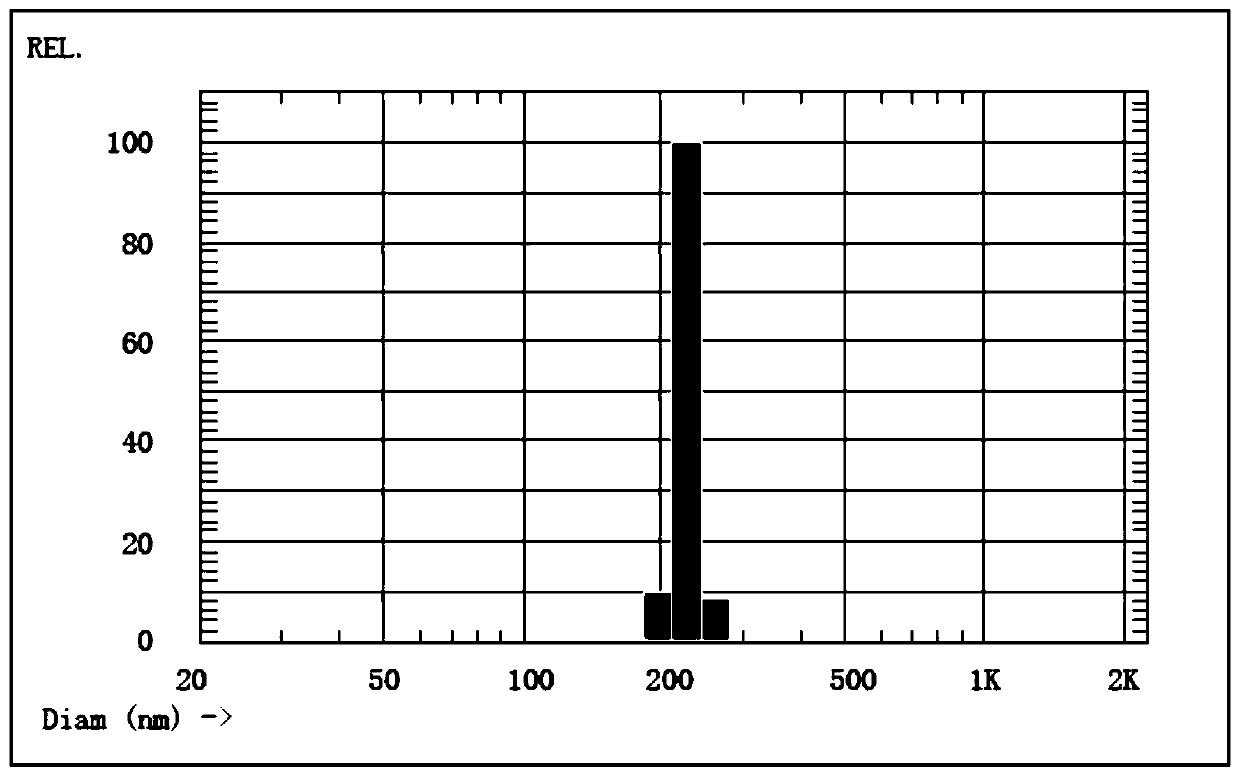Homogeneous chemiluminescence detection kit and application thereof
A homogeneous chemiluminescence and detection kit technology, applied in the field of chemiluminescence, can solve problems such as narrow detection range or linear range, and achieve the effects of reducing non-specific adsorption, improving luminous efficiency and improving accuracy
- Summary
- Abstract
- Description
- Claims
- Application Information
AI Technical Summary
Problems solved by technology
Method used
Image
Examples
Embodiment 1
[0199] Example 1: Preparation of homogeneous chemiluminescence detection kit
[0200] 1. Preparation of acceptor microspheres
[0201] 1. Prepare a 25 mL round bottom flask, add 0.1 g of Europium (Ⅲ) complex, 10 mL of 95% ethanol, magnetically stir, and heat the water bath to 70° C. to obtain a solution of Europium (Ⅲ) complex.
[0202] 2. Prepare a 100mL three-necked flask, add 10mL 95% ethanol, 10mL water and 10mL 10% concentration, 200nm particle size polystyrene microspheres coated with carboxydextran hydrogel, magnetically stir, and the water bath is heated to 70 ℃.
[0203] 3. Slowly add the europium (III) complex solution in step 1 dropwise to the three-necked flask in step 2, stop stirring after reacting at 70°C for 2 hours, and cool naturally to obtain an emulsion.
[0204] 4. Centrifuge the above emulsion for 1 hour at 30000g, discard the supernatant after centrifugation, and then resuspend it with 50% ethanol. After repeated centrifugation and cleaning for 3 times, the solu...
Embodiment 2
[0235] Example 2: Homogeneous chemiluminescence detection method
[0236] Add 25μL of the sample to be tested, 25μL of biotin-labeled antibody, 175μL of donor reagent, and 25μL of acceptor reagent to the test sample hole position, additional reagent hole position, first reagent hole position, and second reagent hole position of the reagent cup strip. Then, put the reagent cup strip in the POCT analyzer developed by Boyang Biotechnology (Shanghai) Co., Ltd., the sample adding mechanism takes the corresponding volume of the sample to be tested, adds it to the additional reagent hole, vibrates, and incubates at 37°C 10 minutes; add the incubated liquid in the additional reagent well to the first reagent well and shake, incubate at 37°C for 10 minutes to form a mixed liquid; continue to add the mixed liquid to the second reagent well, shake, 37 Incubate at ℃ for 10 minutes to form the mixture to be tested. Use the laser emitted by the exciter in the detection assembly to irradiate t...
Embodiment 3
[0237] Example 3: Detection of luminous signal
[0238] Using the method described in Example 2 and the kit described in Example 1 (a kit containing receptor microspheres coated with Anti-PCT antibody I and biotin-labeled Anti-PCT antibody II as an example) was used to detect the test sample The test results are shown in Table 1.
[0239] Table 1
[0240]
[0241] It can be seen from Table 1 that under the condition that the particle size of the donor microspheres is fixed, as the particle size of the acceptor microspheres increases, the detected luminescence signal value gradually decreases. When the particle diameters are equal, the detected luminescence signal value is the largest. And when the particle size of the donor microspheres and the acceptor microspheres are both 200nm, the detected luminescence signal value is the best, and the detection sensitivity is the best.
PUM
| Property | Measurement | Unit |
|---|---|---|
| The average particle size | aaaaa | aaaaa |
| Particle size | aaaaa | aaaaa |
| Particle size | aaaaa | aaaaa |
Abstract
Description
Claims
Application Information
 Login to View More
Login to View More - R&D
- Intellectual Property
- Life Sciences
- Materials
- Tech Scout
- Unparalleled Data Quality
- Higher Quality Content
- 60% Fewer Hallucinations
Browse by: Latest US Patents, China's latest patents, Technical Efficacy Thesaurus, Application Domain, Technology Topic, Popular Technical Reports.
© 2025 PatSnap. All rights reserved.Legal|Privacy policy|Modern Slavery Act Transparency Statement|Sitemap|About US| Contact US: help@patsnap.com



